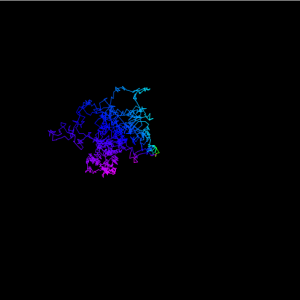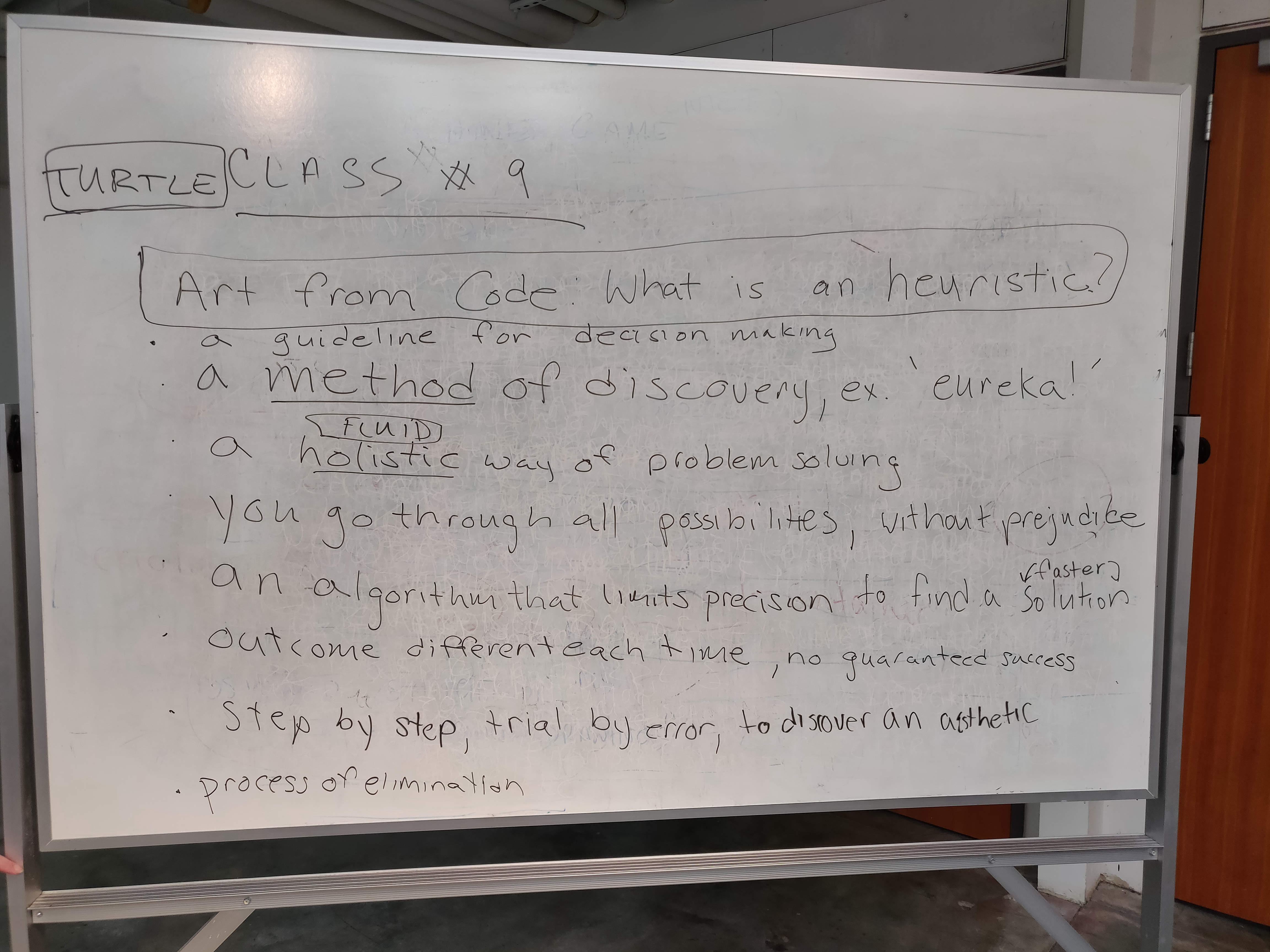My conference project started off as a suggestion by Angela to incorporate a random walker into my work. At the time, I had no idea what a random walker was or how to build a body of work around one but I agreed. I was originally planning to do something more to do with tessellations but after doing research on the random walker, I thought that it was interesting and would make an good conference project.
In the process of learning about what random walkers were and coding them, I stumbled upon a color space known as Hue, Saturation, Brightness (HSB) color space. By using this color space, I could essentially assign changing values to my walker and allow it to more easily cover a color space then for example, RGB. It also allowed me to create a nice looking hue to the piece. In order to create a random walker, one must first understand what a random walker does. A random walker essentially randomly chooses where to draw the next point based on where it is now, with a temporary origin value and a new value for which amplitude and direction are determined randomly. When seen in operation, the walker draws a line to the new point within certain parameters from the origin point, sets the origin point as the new point, and repeats. Doing so doing so creates a erratic line that twists and turns, creating a sort of lightning effect, although slowly.
Quite different from the artists we studied in class, a random walker is extremely unpredictable due to the completely random nature of it. One could argue that it imparts a sense of organicism like Grace Hertlein, but I feel that it lacks the structure and composition of Hertlein, while relying on color to bring a sense of uniformity to the piece. I do feel that my piece is quite different from the style of all the artists we studied in class, as it lacks structure and rhythm, an aspect all three artists use in their body of work to compose and guide the viewer’s eyes. One aspect that my piece is similar to Georg Nees is the use of lines and randomness. Quite like the piece 8-ecke (1964), my random walker plots lines at a random order, yet unlike 8-ecke the viewers attention is drawn to the progression and the shape that the walker draws, instead of the “chaotic order” that Nees has in his piece.
Upon revising the piece, I thought that a second walker made of points will create an interesting effect, as I observed that because of the low spaces between lines, they tend to overlap and go back and forth. Taking advantage of this, I implemented a second walker, this time instead of drawing lines between points, it would draw a dot at the two points. Once again I chose to use HSB as the gradient because in my opinion, the gradient that it forms is much more visually appealing when compared to RGB.

To create this last piece, I implemented a loop similar to Grace Hertlein’s trees, where she creates objects using many loops per frame. When I applied this to a random walker, it expanded much faster then I expected, as I was effectively making 200 moves per frame when compared the one move per frame of the walkers before. This rapid expansion gave me the impression of lightning, which is more apparent when seeing the walker actually expand. In order to give it even more similarity to lightning I added a fade that reduces the brightness of piece until barely visible after 5 frames, in order to reflect the fleeing nature of lightning. However, I opted for the brightness to never dip below 5 as I feel that a defining characteristic of lightning is the impression it makes on whoever sees it. So in order to simulate and represent the feeling of watching lightning, a shadow of the past locations of the walker is left behind which, after time, forms a faint structure that the lightning seemingly dances upon. The form of lightning is not as apparent when seen in this still frame, bit I feel that it is very apparent while the program is running. in the photo captured below, the lightning seems very short and muted, almost too much for visual appeal, but while the program runs the brightness of the lightning in the last frame seemingly carries on to the next, leading to an impression of flashes of lightning.
I feel that although my pieces lack a solid structure and repetition when compared to famous artists like Molnar or Nees, I manage to capture a lot of the characteristics of randomness that make it so desired in computer art. Instead of setting grid-like structures for my piece to follow, I opted for it to roam free, following a more organic route like a plant or an animal, this agreeing with these artists who use randomness in their art. Overall, I felt that although repetition is almost non-existent, it still manages to keep the viewer’s attention by playing with a ever-expanding system with a huge amount of variation possible.




